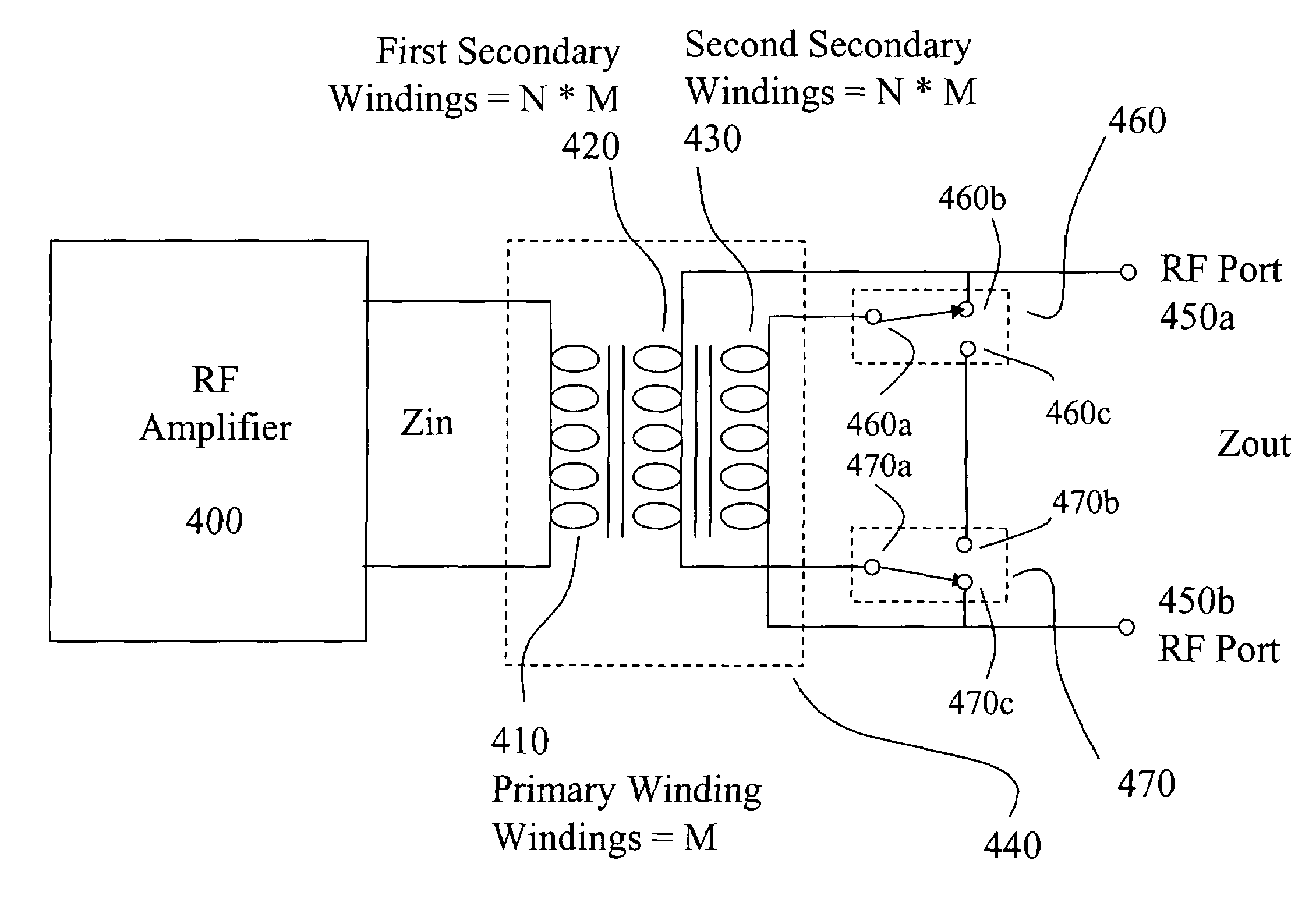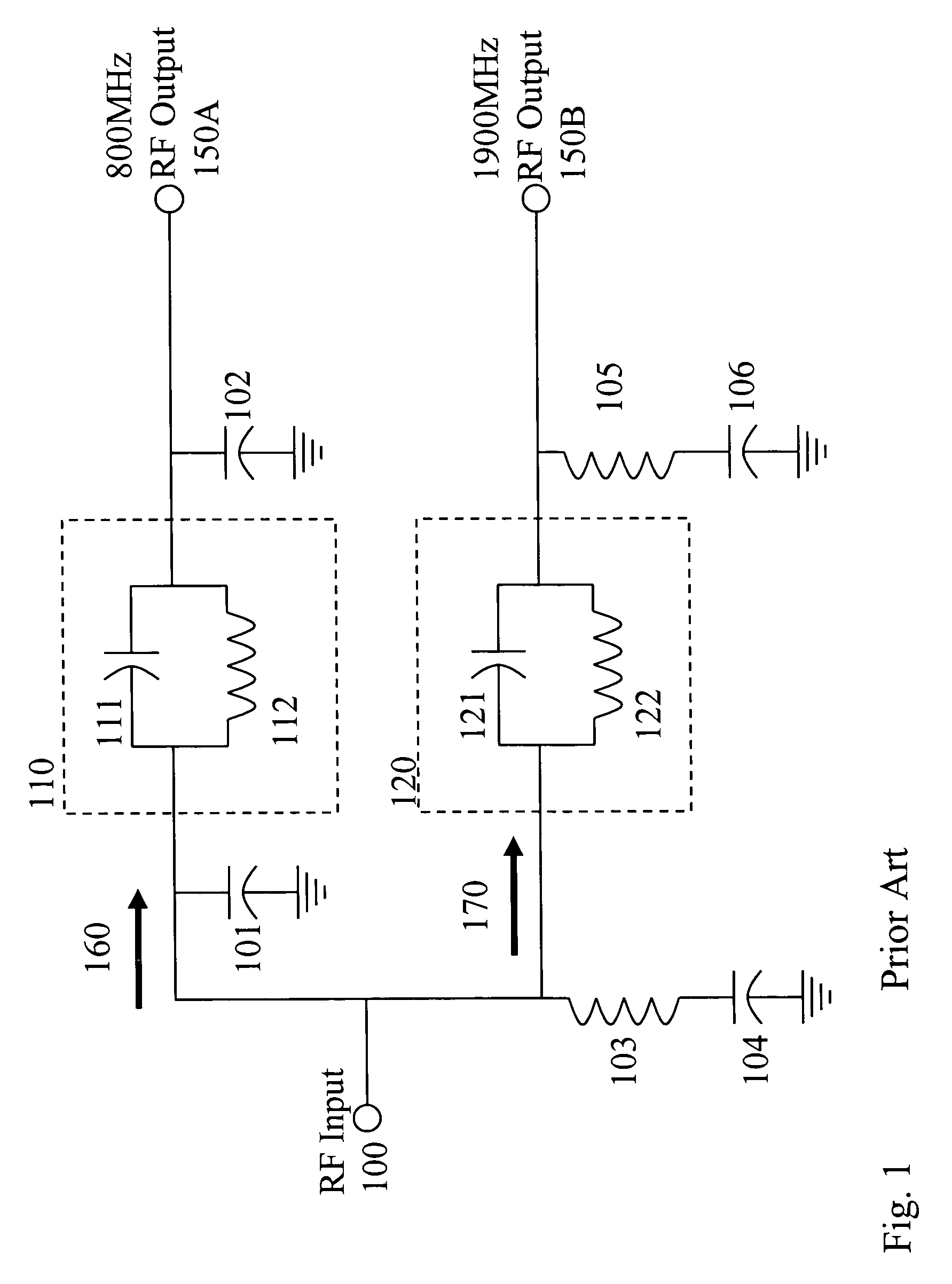Switched impedance transformer for semiconductor circuits
a transformer and impedance technology, applied in the direction of transmission, inductance, amplifier, etc., can solve the problems of increasing the difficulty of provisioning not only in the context, the cost of electrical consumption in the infrastructure of the network, and the importance of power
- Summary
- Abstract
- Description
- Claims
- Application Information
AI Technical Summary
Benefits of technology
Problems solved by technology
Method used
Image
Examples
first embodiment
[0035]FIG. 4A illustrates the invention wherein the microwave impedance transformer is configured to a first state providing a 4:1 impedance transform. In this embodiment, a transformer 440 is disposed between an RF amplifier 400 and its RF output ports 450a and 450b.
[0036]As shown, the transformer 440 comprises three windings, a primary winding 410 comprising M turns, a first secondary winding 420 comprising N*M turns, and a second secondary winding 430 also comprising N*M turns. The primary winding 410 is connected across the output ports of the RF amplifier 400.
[0037]The first secondary winding 420 has one port electrically coupled to both the RF output port 450a and switch contact 460b of a first switching circuit 460. The other port of the first secondary winding 420 is electrically coupled to pole switch contact 470a of a second switching circuit 470.
[0038]The second secondary winding 430 has one port electrically coupled to both the RF output port 450b and switch contact 470...
second embodiment
[0043]FIG. 5 illustrates the invention wherein a microwave transformer provides one of eight impedance transforms. At high frequencies, such as encountered in RF and microwave circuits, the windings of the transformer are best considered as a series of transmission lines rather than lumped elements. As such a low frequency equivalent circuit for these devices is such that the transmission line winding is represented by an inductance, and when combining multiple windings phase effects should be considered. In this manner, a transformer operating at microwave and RF frequencies operates differently to its low frequency equivalent, for example for applications such as power transmission.
[0044]Shown in FIG. 5 is an RF input port 500, which is electrically coupled to the common contact 501a of the first switch circuit 501. The upper output port 501b of the first switch circuit 501 is electrically coupled to a first input port 510a of the transformer 510, and the lower output port 501c of...
PUM
 Login to View More
Login to View More Abstract
Description
Claims
Application Information
 Login to View More
Login to View More - R&D
- Intellectual Property
- Life Sciences
- Materials
- Tech Scout
- Unparalleled Data Quality
- Higher Quality Content
- 60% Fewer Hallucinations
Browse by: Latest US Patents, China's latest patents, Technical Efficacy Thesaurus, Application Domain, Technology Topic, Popular Technical Reports.
© 2025 PatSnap. All rights reserved.Legal|Privacy policy|Modern Slavery Act Transparency Statement|Sitemap|About US| Contact US: help@patsnap.com



